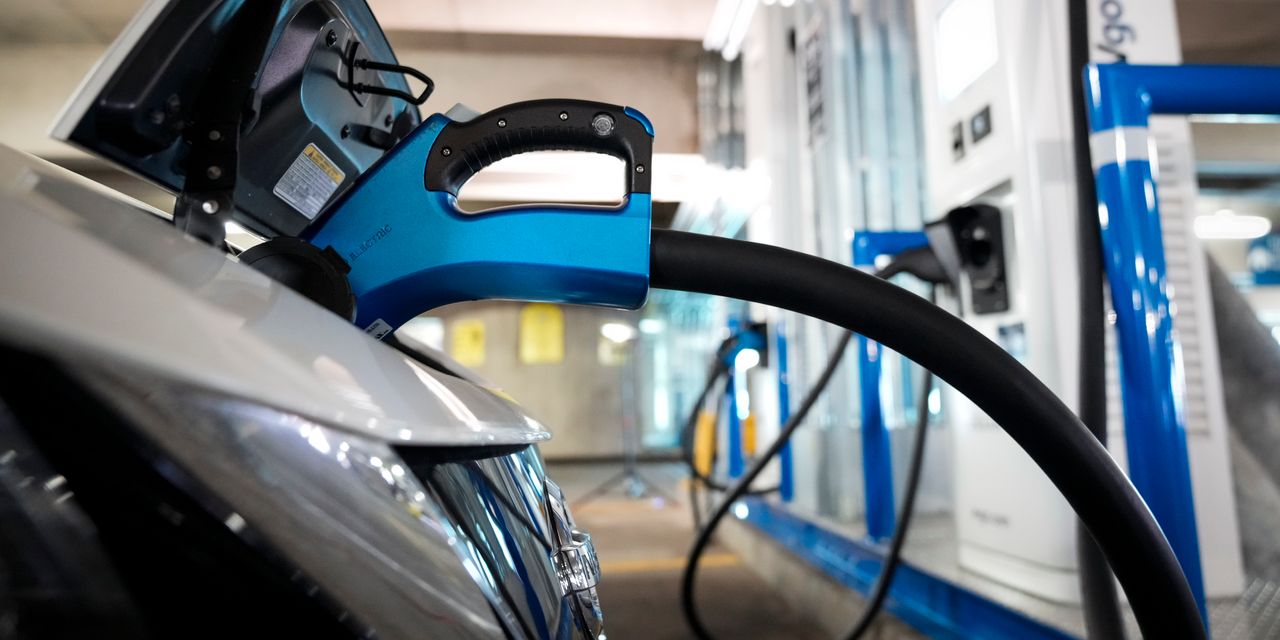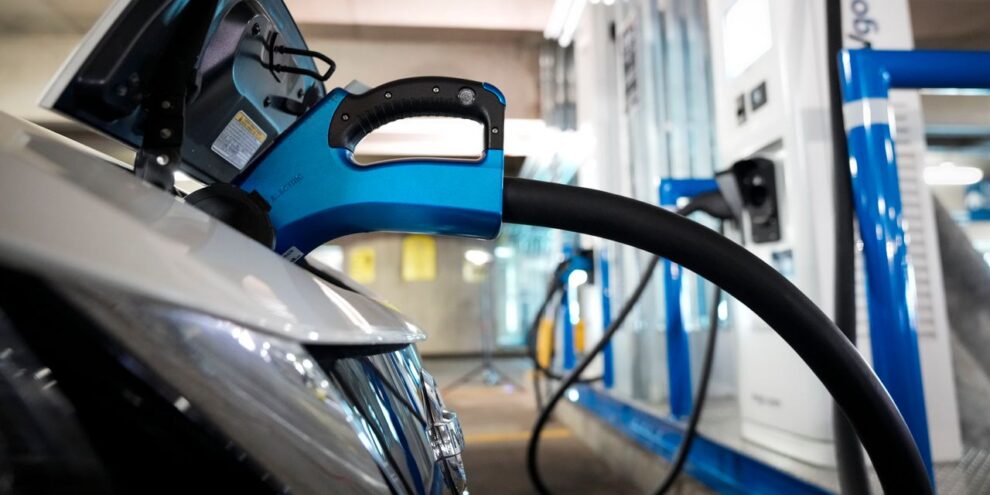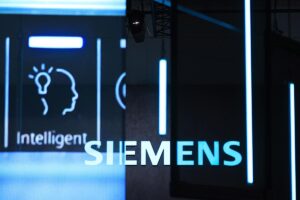
Billions of dollars earmarked for electric-vehicle charging in the $1 trillion infrastructure bill is expected to boost passenger and commercial EV adoption, bringing public charging stations to underserved areas and making range anxiety a thing of the past.
The goal is to make EVs “convenient enough for consumers to consider them,” said Kristin Dziczek, vice president of research at the Center for Automotive Research in Michigan.
The recently approved bill, which President Joe Biden is slated to sign into law on Monday, set aside some $7.5 billion for EV charging and related programs. The target is to have 500,000 public stations by 2030.
Related: Rivian Automotive stock soars in trading debut, in the largest IPO of the year
According to the Department of Energy, the U.S. is about 20% of the way there, with 100,759 public EV charging ports available as of the first quarter. That includes 17,558 public and workplace fast chargers, or those able to juice an EV battery to 80% in 20 to 30 minutes, which would be the ones most wanted along highways.
To meet the administration’s target, about 11,407 public EV ports will need to be installed each quarter for the next nine years, the DOE said.
It’s not exactly clear where and how the money will be spent, and some of it relies on electric-grid improvements and EV incentives that are in Biden’s Build Back Better bill.
“Ultimately there will be winners and losers in the transition and all powers and locations of charging will compete,” said Corey Cantor, an analyst at BloombergNEF. There will be some redundancy and not every charger installed will get it right, he said.
See also: Chasing Tesla: Here are the current electric vehicle plans of every major car maker
“The fast charger that is convenient for a driver today may not be so convenient if someone later installed a slow charger in your apartment parking bay or a fast charger that was cheaper to use was installed elsewhere,” Cantor said.
In the wake of bill’s passing, there were clear winners, at least this week: Shares of EV-charging companies. EVgo Inc. EVGO, +24.79% is looking at a weekly gain of 87%, Volta Inc. VLTA, +8.42% shares are up 14% so far in the week, Blink Charging Co. BLNK, +8.16% is up 11% and ChargePoint Holdings Inc. CHPT, +4.73% is up 4%. That contrasts with a weekly loss of around 0.8% for the S&P 500 index.
“Range anxiety has been one of the biggest EV hurdles for consumers,” Cantor said. Charging in public areas is another aspect of broadening the appeal of EVs, which so far are a premium market although costs are coming down over time. “More focus in charging is a big shift.”
Read more: Electric pickup trucks are coming to market. The question now is who will buy them?
Most EV owners may still charge at home, but having a robust charger network will make them feel more confident. The bill may also spread the chargers’ locations more evenly, and to less populated areas that currently have fewer stations.
It is very likely that the footprint for public charging will follow the pattern of gas stations, such as locations off a freeway exit or by interstate rest stops and service plazas, CAR’s Dziczek said.
General Motors Co. GM, +4.30% announced in late October a plan to install up to 40,000 Level 2 EV chargers across the U.S. and Canada, working with its dealers and including areas where EV charging is still limited. The company estimated that nearly 90% of the U.S. population lives within 10 miles of a GM dealership.
EV sales are growing, albeit from a low share of the auto market. An electric car is about $10,000 more expensive than a comparable internal combustion engine vehicle, but more models and body types are coming to the market, leading to increased demand for charging.
Most estimates call for battery and plug-in hybrid EVs being between 30% and 50% of the U.S. fleet by 2030. EV charging is still an emerging business model, and no one yet knows which one is going to be the most successful.
That’s part of the significance of the $7.5 billion earmarked for EV charging, said Stan Caldwell, executive director of Traffic21 Institute and Mobility21 at Carnegie Mellon University.
“This can start to fill the gaps where the market is not going to come quickly,” he said. And not just in terms of urban, where market forces have concentrated the stations, vs. suburban and rural areas, he said.
There are access equity issues at play as well, around EV owners who may not have access to private charging, Caldwell said. “This is where the money (in the bill) can be strategically placed … Technology is not the biggest hurdle, the business model is,” he said.
Research has also found variations in range and battery performance in extreme weather and terrain, so that could guide some of the fast-charging and charging placement, he said. For example, you could have more charging stations on the side of a highway going up a mountain range, Caldwell said.
“We are still in the early-adopter phase” for EVs, he said. There’s not an equitable distribution of charging stations. But the industry continues to outperform projections, both from a technology point of view and from the number of EV offerings already available or coming to the market, he said.
Auto makers have made commitments and investments to EVs that show that’s where they see the market going, Caldwell said. “It’s a reaffirmation that they see the future being around EVs.”







